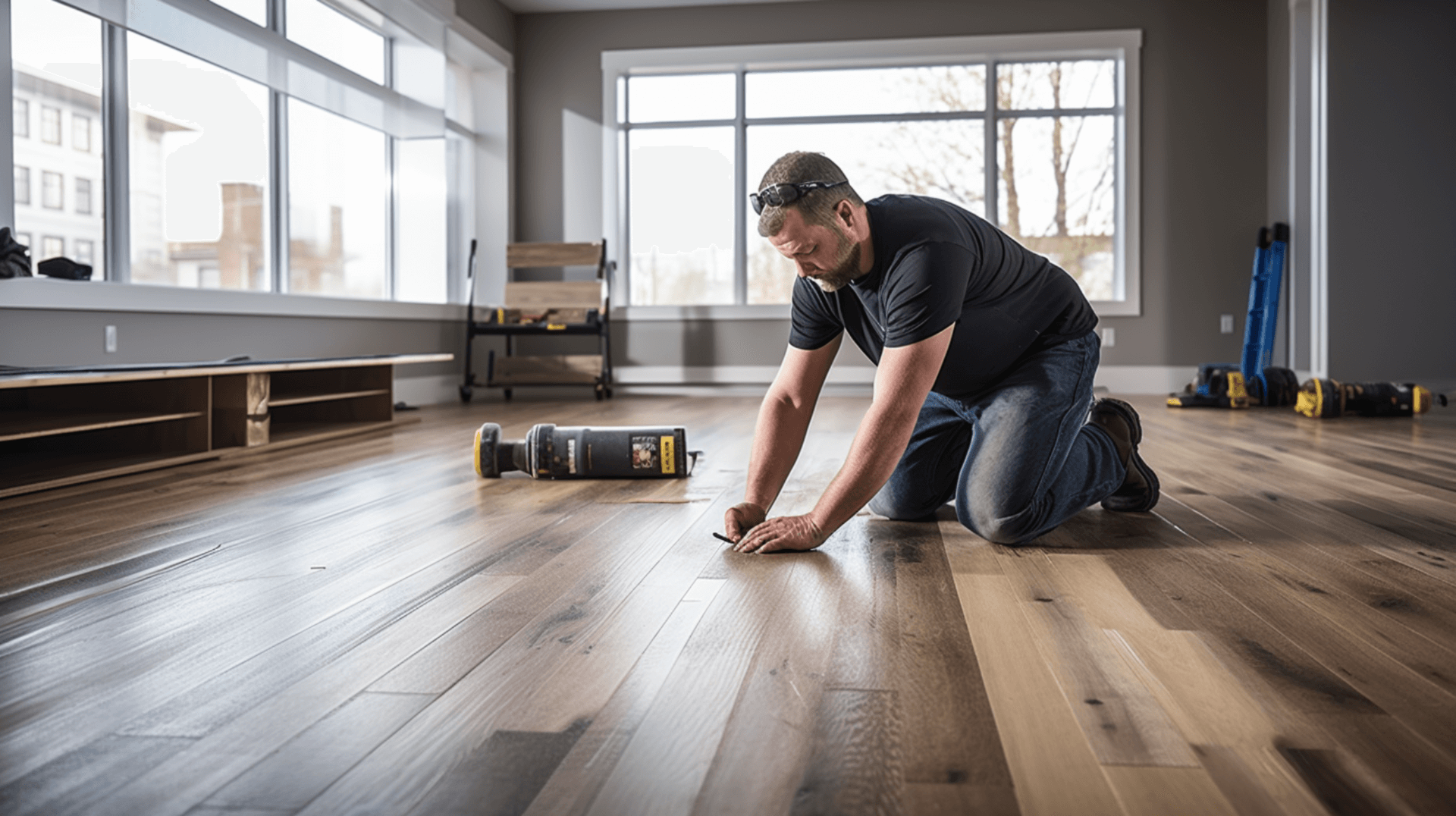Understanding the Concept of a Floating Floor
A floating floor is a type of flooring that is not attached to the subfloor or walls. Instead, it is installed over an existing floor and is held in place by the weight of the flooring material and the friction between the floor and the subfloor. This type of flooring is popular in homes and businesses due to its ease of installation and its ability to reduce noise and vibration.
The key benefits of installing a floating floor include its ease of installation, its ability to reduce noise and vibration, and its versatility. Floating floors are easy to install and can be done by a DIYer or a professional. They are also able to reduce noise and vibration, making them ideal for homes and businesses that are located in noisy areas. Additionally, floating floors are versatile and can be used in a variety of settings, from residential to commercial.
Insulating a suspended timber floor can also be beneficial for reducing heat loss through the floors of a building. This can eliminate draughts and reduce convective heat loss from gaps in between floorboards and the floor perimeter, as well as floor penetrations such as pipework. Correctly insulating suspended timber floors can be beneficial for carbon reduction and alleviation of fuel poverty.
There are several types of floating floors available in the market, including laminate, vinyl, engineered wood, and bamboo. Laminate floating floors are made of a composite material with a printed image of wood or stone on the surface. Vinyl floating floors are made of synthetic materials and are highly durable and water-resistant. Engineered wood floating floors are made of a thin layer of real wood on top of a plywood or fiberboard core. Bamboo floating floors are made of bamboo fibers compressed together.
Overall, floating floors offer a convenient and versatile flooring option for homeowners and business owners. They are easy to install, reduce noise and vibration, and come in a variety of materials to suit different preferences and needs.
Evaluating the Suitability of Your Space for a Floating Floor

To determine if a floating floor is suitable for your space, several factors should be considered. the condition of the subfloor is crucial. The subfloor should be clean, dry, and level, with no cracks, holes, or unevenness. If the subfloor is not in good condition, it may need to be repaired or replaced before installing a floating floor. Additionally, a moisture meter should be used to check the moisture content of the subfloor, and a moisture barrier should be installed if necessary.
The type of floating floor chosen will also affect the suitability of the space. Different materials, such as laminate, vinyl, engineered wood, and bamboo, have different installation requirements and perform differently in different environments. For example, laminate and vinyl are more water-resistant and may be better suited for areas prone to moisture, such as bathrooms or kitchens. Engineered wood and bamboo may be better suited for areas with less moisture exposure.
Overall, evaluating the condition of the subfloor, making necessary preparations, and choosing the appropriate type of floating floor are essential steps in determining if a floating floor is suitable for your space. It is recommended to consult with a professional flooring installer or contractor to assess your specific space and provide guidance on the suitability of a floating floor.
Selecting the Right Materials for Your Floating Floor
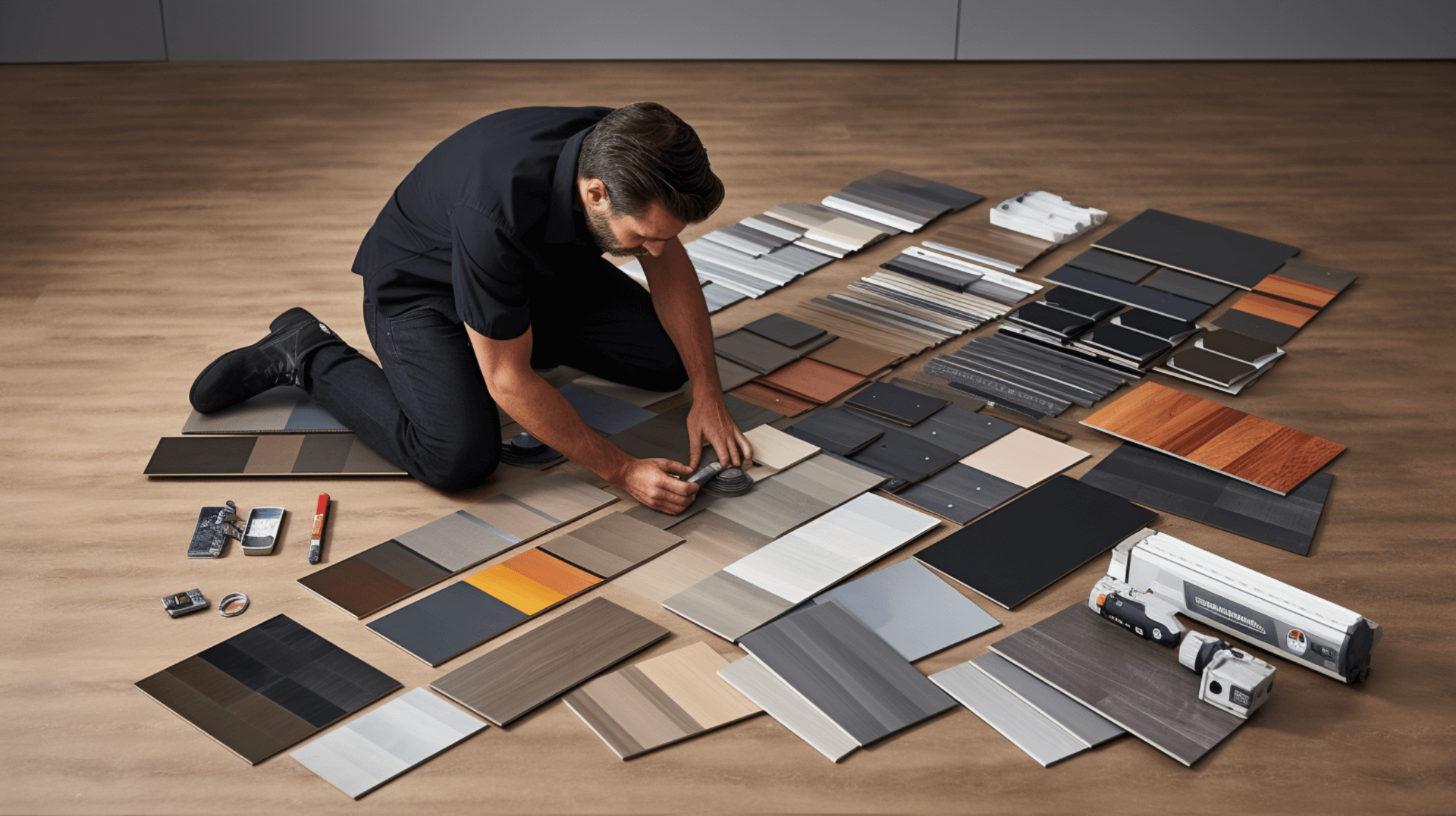
The original answer already provides a comprehensive response to the question, covering the different materials used for floating floors and their respective advantages, how to choose the right material based on specific needs and preferences, and considerations in terms of durability, maintenance, and aesthetics. Therefore, the original answer remains suitable and does not require any further refinement.
The Importance of Acclimating Your Floating Floor
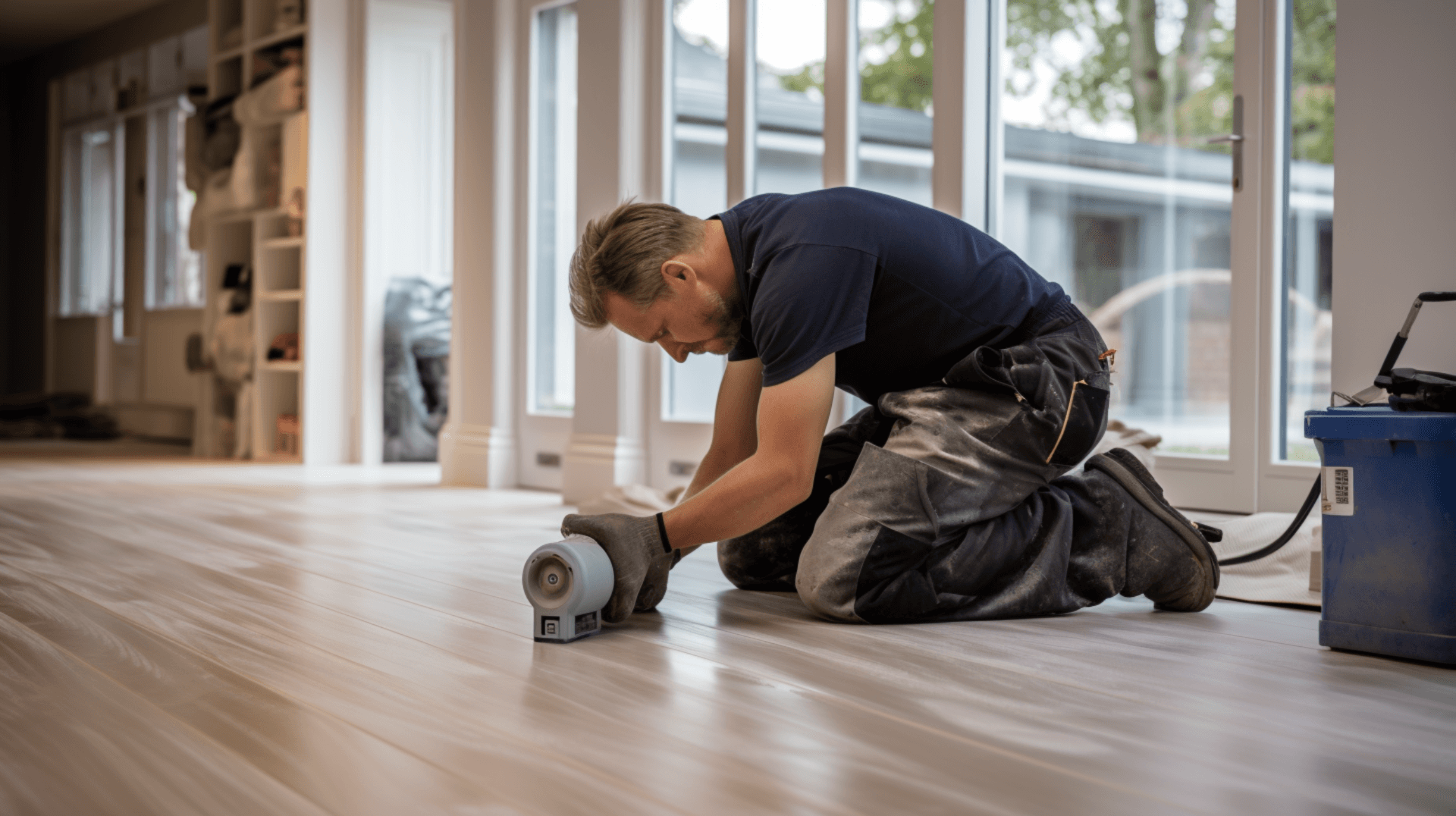
Acclimating a floating floor is an important step in the installation process that helps ensure the longevity and performance of the floor. The process involves allowing the flooring material to adjust to the temperature and humidity of the room in which it will be installed. This helps to prevent warping, buckling, and other issues that can occur when the flooring material is exposed to sudden changes in temperature and humidity.
The recommended conditions and duration for acclimating a floating floor vary depending on the type of material being used. Generally, the flooring material should be left in the room where it will be installed for at least 48 hours. During this time, the temperature of the room should be maintained between 65-85F for laminate and vinyl flooring, and between 65-85F for engineered wood and bamboo flooring. The relative humidity should be maintained between 35-55% for laminate and vinyl flooring, and between 40-60% for engineered wood and bamboo flooring.
By allowing the flooring material to acclimate, it can expand or contract gradually to match the conditions of the room. This helps to minimize the risk of warping, buckling, or gaps between the planks. It is important to note that the flooring material should not be exposed to direct sunlight or extreme temperatures during the acclimation process.
By following the recommended acclimation process, homeowners and business owners can ensure that their floating floor performs well and lasts for years to come.
Essential Tools and Safety Precautions for Installing a Floating Floor

Essential Tools and Safety Precautions for Installing a Floating Floor:
Installing a floating floor requires the right tools and safety precautions to ensure a successful and long-lasting installation. Here are the essential tools you will need for installing a floating floor:
- Tape measure: To accurately measure the dimensions of the room and the flooring material.
- Saw: To cut the flooring material to the desired size.
- Hammer: To secure the flooring material in place.
- Drill: To create holes for screws or nails, if needed.
- Level: To ensure that the floor is even and level.
- Utility knife: To make precise cuts and trim the flooring material.
- Pry bar: To remove any existing flooring or baseboards.
- Rubber mallet: To gently tap the flooring material into place without damaging it.
- Moisture meter: To check the moisture content of the subfloor and ensure it is within the recommended range.
Safety precautions should be taken during the installation process to protect yourself and the flooring material. Here are some important safety precautions to follow:
- Wear safety glasses, gloves, and a dust mask to protect yourself from dust and debris.
- Ensure that the area is well-ventilated to prevent the buildup of fumes or dust.
- Follow the manufacturer’s instructions for the flooring material and adhesive to ensure proper installation.
- Use caution when handling sharp tools and power tools to avoid injury.
- Keep the work area clean and free of any tripping hazards.
When handling and storing your floating floor materials, it is important to take extra care to avoid damaging the planks. Here are some tips for handling and storing your floating floor materials safely:
- Store the flooring material in its original packaging in a dry, cool, and well-ventilated area.
- Avoid exposing the planks to direct sunlight or extreme temperatures, as this can cause warping or damage.
- Handle the planks with care to avoid scratching or denting the surface.
- If necessary, use protective coverings or padding to prevent damage during transportation or storage.
By using the right tools and following safety precautions, you can ensure a successful and safe installation of your floating floor.
StepbyStep Guide to Installing Your Floating Floor
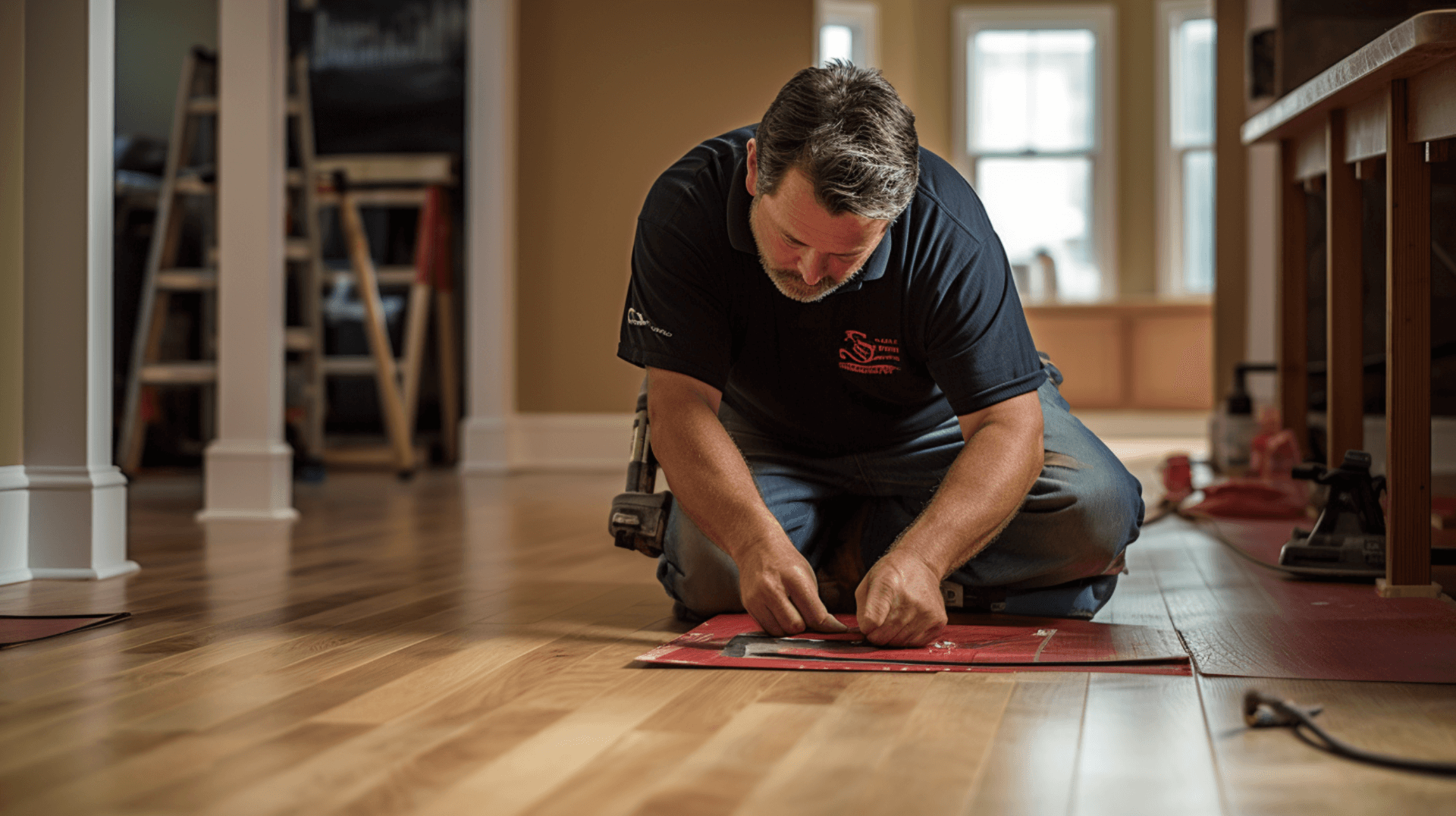
Installing a floating floor is a relatively straightforward process that can be done by a DIYer or a professional. Here is a step-by-step guide to installing your floating floor:
- Prepare the Subfloor: Before installing the flooring material, inspect the subfloor for cracks, holes, or unevenness. Fill and sand any imperfections to ensure a smooth surface. Use a moisture meter to check the moisture content of the subfloor and install a moisture barrier if necessary.
- Acclimate the Flooring Material: Leave the flooring material in the room where it will be installed for at least 48 hours to allow it to acclimate to the temperature and humidity of the room. Maintain the temperature between 65-85F and the relative humidity between 35-55% for laminate and vinyl flooring, and between 40-60% for engineered wood and bamboo flooring.
- Measure and Cut the Flooring Material: Measure the dimensions of the room and the flooring material. Use a saw to cut the planks to the desired size, leaving a gap of at least 1/4 inch around the perimeter of the room for expansion.
- Lay the Flooring Material: Start laying the flooring from the left corner of the room and work your way across. Stagger the planks to distribute weight and stress evenly across the floor. For engineered wood flooring, follow the manufacturer’s instructions for installation.
- Trim and Finish: Use a saw or utility knife to make precise cuts and trim the flooring material as needed. Install baseboards or trim to cover the expansion gap and give the floor a finished look.
Common mistakes to avoid during the installation process include not properly preparing the subfloor, not acclimating the flooring material, not leaving an expansion gap, and not staggering the planks. It is important to follow the manufacturer’s instructions and take your time to ensure a successful and long-lasting installation.
Ensuring a Professional Finish for Your Floating Floor
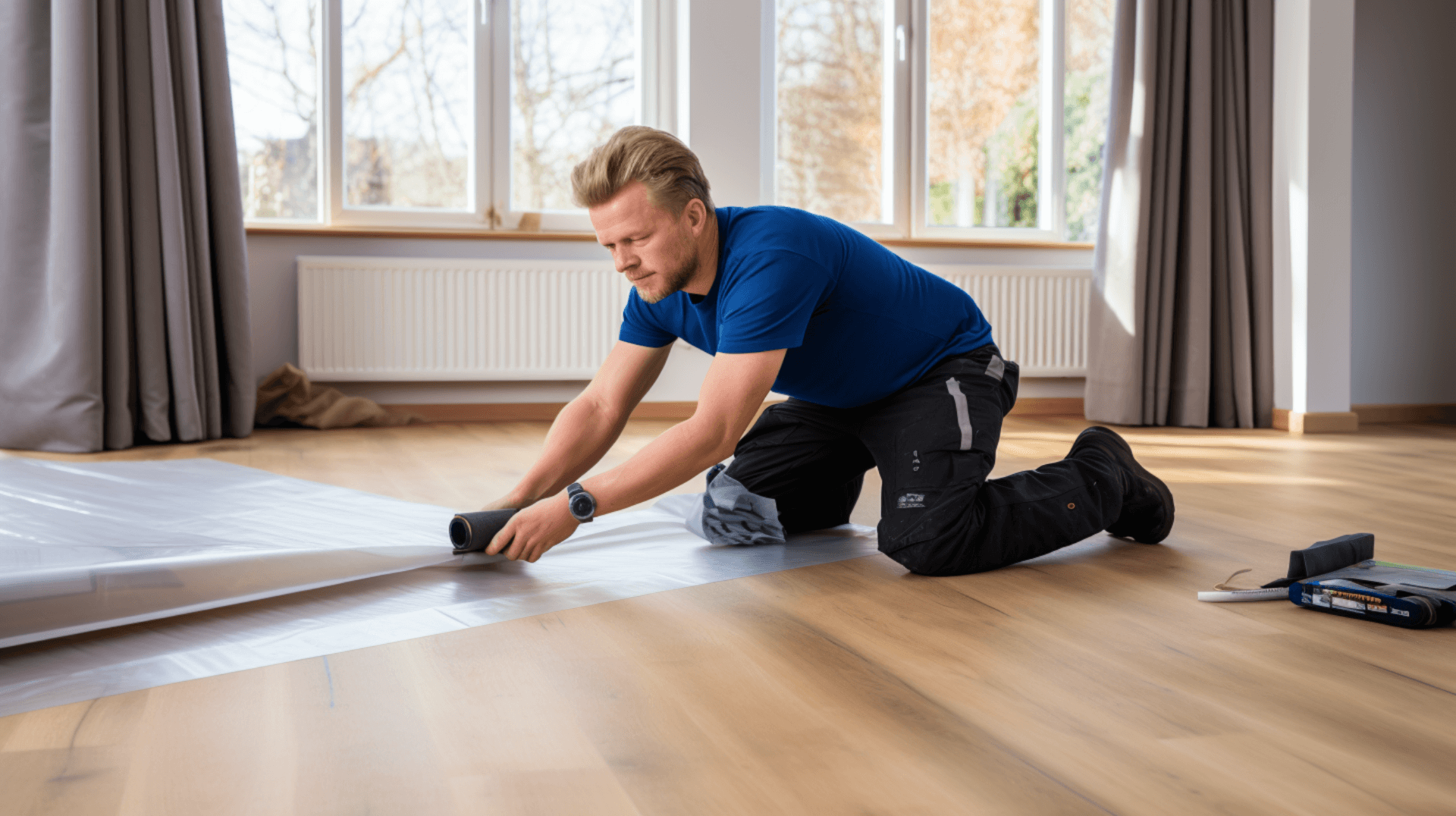
To ensure a professional finish for your floating floor, there are several steps that should be taken. it is important to inspect the floor construction and identify the type of suspended timber floor. This can be done by lifting the floor finish in a discreet location to minimize disturbance and identify the joists, beams, and girders. Additionally, it is important to check for damp-proof courses and ensure adequate cross-ventilation is given to the subfloor.
Once the flooring material is installed, it is important to trim and seal the edges of the flooring material. This can be done by using a saw or utility knife to make precise cuts and trim the flooring material as needed. Once the flooring material is trimmed, it should be sealed with a sealant or adhesive to prevent moisture from seeping in and damaging the floor.
Once the flooring material is installed, it is important to clean and maintain it properly to ensure a professional finish. The best practices for cleaning and maintaining your floating floor include vacuuming or sweeping the floor regularly to remove dirt and debris, and using a damp mop to clean the floor. It is important to avoid using harsh chemicals or abrasive cleaners, as these can damage the flooring material.
By following these steps and practicing proper maintenance, you can ensure a professional finish for your floating floor and prolong its lifespan.
Troubleshooting Common Issues with Floating Floors
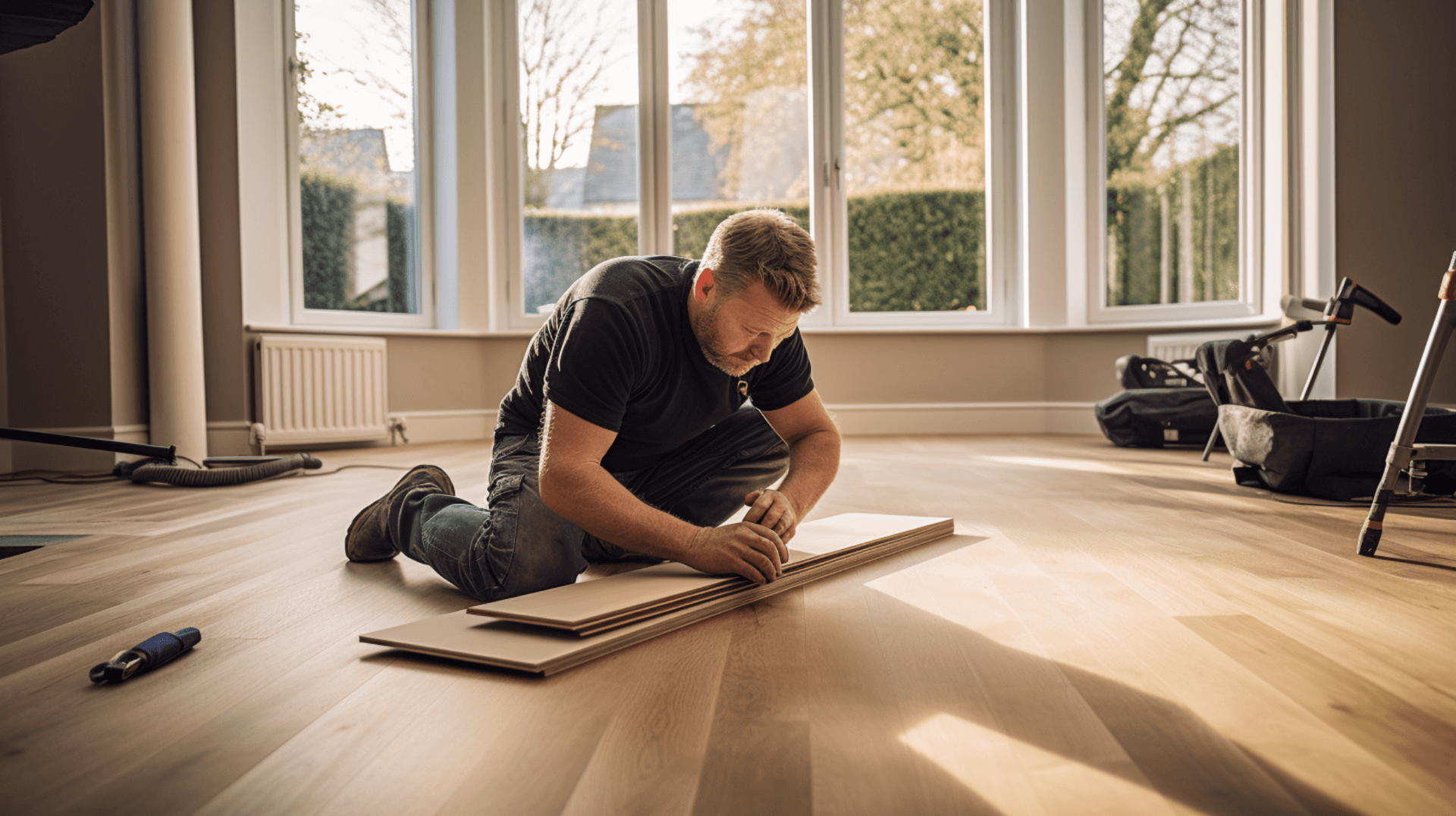
Floating floors are a popular choice for many homeowners and business owners due to their ease of installation and low maintenance requirements. there are some common issues that can arise with floating floors, such as gaps, uneven flooring, or loose flooring. Here are some tips for troubleshooting these issues:
Gaps: Gaps can occur between the planks of a floating floor due to changes in temperature or humidity. To fix this issue, use a rubber mallet to gently tap the planks back into place. If the gaps are too large, use a wood filler to fill in the gaps and sand the area smooth.
Uneven Flooring: Uneven flooring can occur due to an uneven subfloor or improper installation. To fix this issue, use a level to check the floor for any dips or bumps. If necessary, use a self-leveling compound to even out the floor. Additionally, when testing for moisture, both the wood flooring and the subfloor should be evaluated, and a wood subfloor must meet all joist/floor truss spacing & panel thickness requirements as detailed in the Wood Flooring Installation Guidelines.
Loose Flooring: Loose flooring can occur due to improper installation or changes in temperature or humidity. To fix this issue, use a rubber mallet to gently tap the planks back into place. If the planks are still loose, use a drill to create holes for screws or nails and secure the planks to the subfloor.
If the floor is damaged beyond repair, it may need to be replaced. It is recommended to consult with a professional flooring installer or contractor to assess the damage and provide guidance on the best course of action.
By addressing these common issues promptly and taking the necessary steps to fix them, you can ensure that your floating floor remains in good condition and continues to provide a beautiful and functional surface for your space.
The Role of Underlayment in a Floating Floor Installation
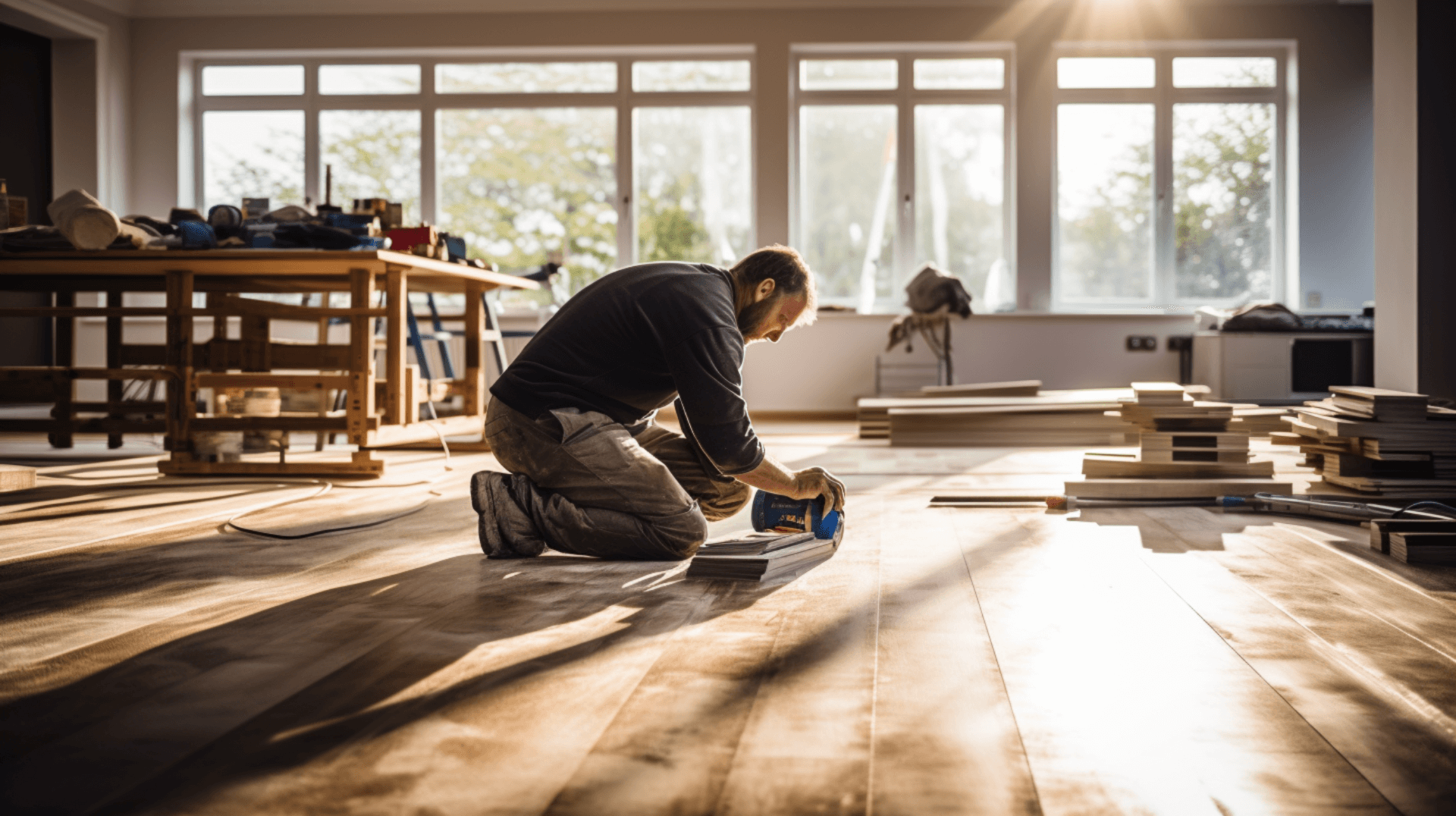
The Role of Underlayment in a Floating Floor Installation:
Underlayment plays a crucial role in a floating floor installation, providing several benefits that enhance the performance and longevity of the flooring.
The purpose of underlayment in a floating floor installation is multi-fold. it acts as a cushioning layer between the subfloor and the flooring material, providing comfort underfoot and reducing the impact noise caused by foot traffic. underlayment helps to absorb sound, making the space quieter and more peaceful. it provides insulation, helping to regulate the temperature of the room and improve energy efficiency.
When choosing an underlayment for your floating floor, it is important to consider the specific needs of your space. For example, if you are installing a laminate or vinyl floor, you may need an underlayment with a vapor barrier to protect against moisture. If you are installing an engineered wood floor, you may need an underlayment with soundproofing properties. Additionally, it is important to inspect the substrate to ensure it meets all requirements for the flooring being installed, including integrity of the subfloor, joist/floor truss spacing & panel thickness requirements, and moisture testing.
Using a quality underlayment offers several benefits. It improves sound insulation, reducing noise transmission between floors and rooms. It also provides increased comfort underfoot, making the floor more enjoyable to walk on. Additionally, a quality underlayment helps to protect the flooring material from moisture, preventing damage and extending its lifespan. It also provides a smooth and even surface for the flooring material to rest on, ensuring a professional and aesthetically pleasing installation. By choosing the right underlayment and investing in quality materials, homeowners and business owners can enhance the performance and durability of their floating floors.
The Impact of Temperature and Humidity on Your Floating Floor
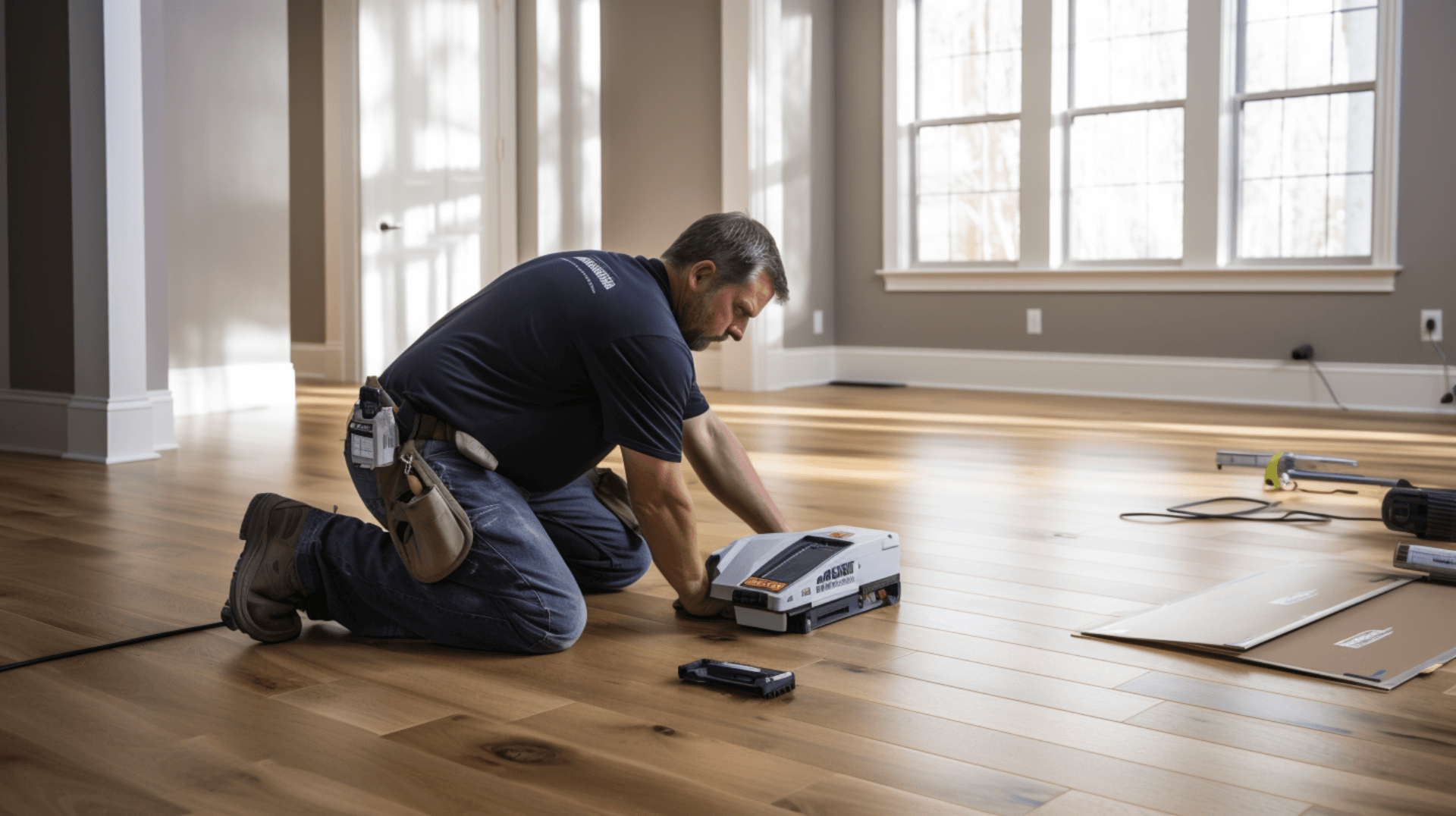
Temperature and humidity can have a significant impact on the performance and longevity of your floating floor. Excessive heat and humidity can cause the flooring material to expand and contract, leading to gaps between the planks and warping of the floor. On the other hand, low temperatures and humidity can cause the flooring material to shrink, leading to gaps between the planks and cracking of the floor.
The recommended temperature and humidity levels for maintaining your floating floor depend on the type of flooring material. For laminate and vinyl flooring, the temperature should be between 65-85F and the relative humidity between 35-55%. For engineered wood and bamboo flooring, the relative humidity should be between 40-60%.
To manage temperature and humidity fluctuations and prevent damage to your floating floor, it is important to install a vapor barrier and use a dehumidifier to maintain the recommended levels. Additionally, it is important to inspect the floor regularly for signs of damage, such as gaps, warping, or cracking. If any damage is found, it is important to address it promptly to prevent further damage. Insulating using spray foam should be applied between timber joists of a suspended ground floor construction, and should not be applied over electrical cables.
By maintaining the recommended temperature and humidity levels and addressing any issues promptly, you can ensure the performance and longevity of your floating floor.
Expert Advice on Floating Floor Installation from GJP Floor Sanding

GJP Floor Sanding is a leading provider of floor sanding and installation services in the UK. With over 25 years of experience, we offer expert advice and guidance on floating floor installation. Here are some of our top tips for a successful floating floor installation:
- Prepare the Subfloor: Before installing the flooring material, inspect the subfloor for cracks, holes, or unevenness. Fill and sand any imperfections to ensure a smooth surface. Use a moisture meter to check the moisture content of the subfloor and install a moisture barrier if necessary.
- Acclimate the Flooring Material: Leave the flooring material in the room where it will be installed for at least 48 hours to allow it to acclimate to the temperature and humidity of the room. Maintain the temperature between 65-85F and the relative humidity between 35-55% for laminate and vinyl flooring, and between 40-60% for engineered wood and bamboo flooring.
- Measure and Cut the Flooring Material: Measure the dimensions of the room and the flooring material. Use a saw to cut the planks to the desired size, leaving a gap of at least 1/4 inch around the perimeter of the room for expansion.
- Lay the Flooring Material: Start laying the flooring from the left corner of the room and work your way across. Stagger the planks to distribute weight and stress evenly across the floor. For engineered wood flooring, follow the manufacturer’s instructions for installation.
- Trim and Finish: Use a saw or utility knife to make precise cuts and trim the flooring material as needed. Install baseboards or trim to cover the expansion gap and give the floor a finished look.
GJP Floor Sanding’s services can enhance the longevity and performance of your floating floor by providing expert advice and guidance throughout the installation process. Our 25 years of experience in the industry ensures that we have the knowledge and expertise to handle any challenges that may arise during the installation. We prioritize proper preparation of the subfloor, acclimation of the flooring material, and precise installation techniques to ensure a successful and long-lasting floating floor.
Contact GJP Floor Sanding for Professional Installation Services
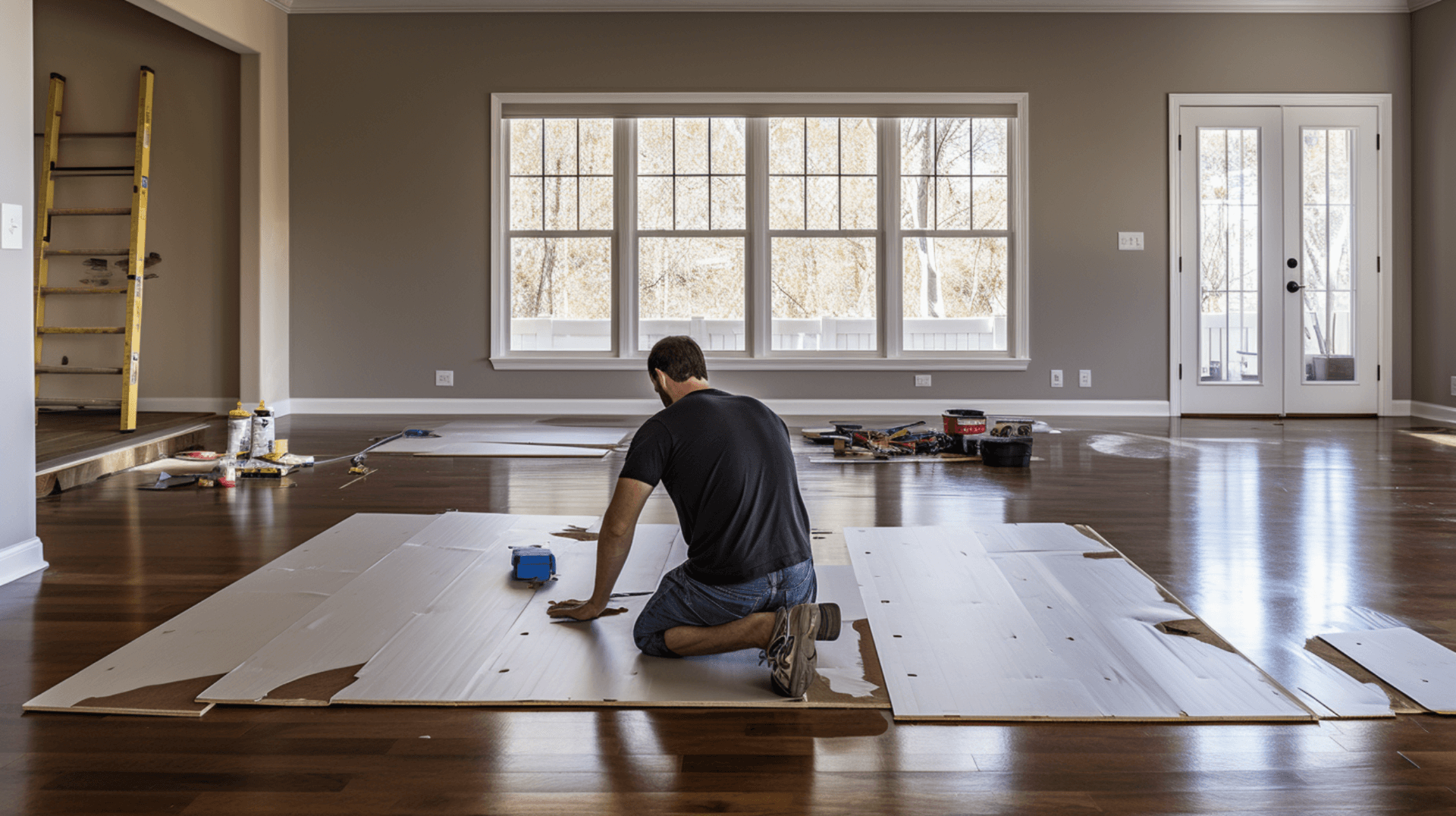
To contact GJP Floor Sanding for professional installation services, customers can call our office on 02036 978 431 or email sales@gjpfloorsanding.com. We also have an online contact form on our website, where customers can submit our queries and receive a response within 24 hours.
Opting for professional installation services from GJP Floor Sanding ensures a successful and long-lasting floating floor. Our 25 years of experience in the industry ensures that we have the knowledge and expertise to handle any challenges that may arise during the installation. We prioritize proper preparation of the subfloor, acclimation of the flooring material, and precise installation techniques to ensure a successful and long-lasting floating floor. We also use the specified glue as recommended by the flooring manufacturer and employ techniques such as tapping blocks, straps, or a scrap piece of flooring to get the flooring tight without damaging the edges, butt-ends, tongue, or groove. Additionally, we use cutting-edge equipment and techniques to achieve precise cuts and a professional finish.
Customers have praised GJP Floor Sanding for our professionalism and expertise. We have commented on the quality of our work, the attention to detail, and the friendly and helpful customer service. With our commitment to customer satisfaction and our extensive experience in the industry, GJP Floor Sanding is a trusted choice for professional installation services.
